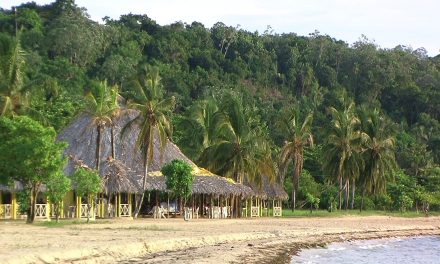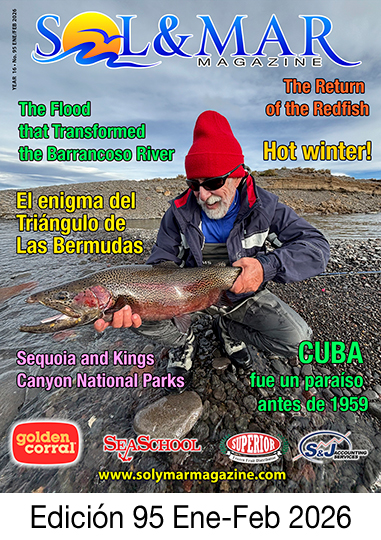By Dr. Martín Aróstegui
Travel and Exploration Director of Sol y Mar Magazine
Our civilization is made up of a tapestry of cultures that have evolved all over the world over thousands of years. Many of these cultures are made up by small groups of people isolated in far away places. These cultures provide very important contributions to the human condition and many are threatened today by such factors as globalization, deforestation and climate change. Every time that I have the opportunity to visit such groups of native people I learn many valuable lessons about life and return home enriched by the experience. This summer my son Martini and I traveled deep into the Amazon Jungle on an exploratory fishing expedition organized by Fish Quest outfitter Captain Alan Zaremba and guided by renowned Amazonian fishing captain Ian -Arthur de Sulocki.
This adventure took us to the banks of the Xingu River and home to the Kamayura Indians of the Amazon. The most interesting part of our adventure was the fact that we had the opportunity to stay at the Chief’s house and live among the tribe’s people for a week. The Kamayura tribe has about 500 members in total, living in four villages in close proximity to the upper Xingu River. We stayed in the village of Morena with Chief Yo-Wopi and his family in a large hut built with tree branches and covered by a roof made of Sape grass that reached all the way to the floor.
The Kamayura lead a very simple existence with minimal outside contact. Their diet consists of fish from the rivers and lakes, which they shoot with bow and arrow, vegetables and fruit that they grow or gather from the rainforest. They have very little outside income and totally depend on the rainforest for their survival.
In 1961 the Brazilian government established the Xingu National Park in order to protect the Kamayura and their lands. Today the kamayura are threatened by deforestation and climate change, which has had significant negative effects in this part of the Amazon, leading to hotter weather, increased incidence of forest fires and decreased food supplies. At the end of our stay I wondered how it would be to live such a simple existence devoid of the pressures of our civilized world and the constant stream of bad news that we are always exposed to. As we said goodbye to Chief Yo-Wopi and his family we could only hope that the Kamayura can live in peace and prosperity for many generations to come.
Alan Zaremba and Fish Quest: www.floridapeacocks.com
Ian-Arthur de Sulocki: www.kaluapesca.com.br
- ¨
- ¸
- ¸
- ¨
- ¨
- ¨
- ¨
- ¸
- ¨
- ¨
- ¨
- ¨
- ¸
- ¸
- ¨
- ¨
- ¨
- ü
- ì
- ü
- ì
- ü
- ü
- ¸
Tribus nativas luchan por sobrevivir en el Amazonas
Por el Dr. Martín Aróstegui
Director de Viajes y Exploraciones de Sol y Mar Magazine
Nuestra civilización está formada por un mosaico de culturas que se han desarrollado en todo el mundo durante miles de años, muchas de las cuales están formadas por pequeños grupos de personas aisladas en lugares lejanos, que hacen aportes muy importantes a la condición humana. Muchos de estos grupos son amenazados hoy día por factores como la globalización, la deforestación y el cambio climático. Cada vez que tengo la oportunidad de visitar esos grupos de gente nativa, aprendo lecciones valiosas sobre la vida y regreso a casa enriquecido por la experiencia. Este verano mi hijo Martini y yo viajamos a las profundidades de la selva Amazonas en una expedición de pesca experimental organizada por el capitán Alan Zaremba de Fish Quest y guiado por el famoso capitán de pesca del Amazonas Ian-Arthur de Sulocki. Esta aventura nos llevó a la orilla del río Xingu, hogar de los indios Kamayura de la Amazonia. La parte más interesante de esta aventura fue el hecho de que tuvimos la oportunidad de permanecer en la casa del jefe, y vivir con su tribu durante una semana. La tribu Kamayura cuenta con unos 500 miembros en total, que viven en cuatro aldeas cerca de la parte alta del río Xingu. Nos alojamos en el pueblo de Morena con el jefe Yo-WOPI y su familia en una gran choza construida con ramas de árboles y cubierto por un techo de hierba Sape. El Kamayura lleva una vida muy simple, con un mínimo contacto con el exterior. Su dieta consiste de peces de ríos y lagos, que pescan con arco y flecha; frutas y verduras que cultivan o recogen de la selva. Ellos dependen exclusivamente de la selva para su supervivencia. En 1961 el gobierno brasileño estableció el Xingu como Parque Nacional con el fin de proteger la tribu Kamayura y sus tierras. Hoy en día los Kamayura se ven amenazados por la deforestación y el cambio climático, que ha tenido efectos negativos significativos en esta parte de la Amazonia, dando lugar a un clima más caliente, mayor incidencia de incendios forestales y la disminución de los suministros de alimentos. Al final de nuestra estancia, me preguntaba cómo sería vivir una vida tan sencilla carente de las presiones de nuestro mundo civilizado y el flujo constante de malas noticias que siempre estamos expuestos. Al despedirnos del Jefe Yo-WOPI le deseamos que él y su familia Kamayura puedan vivir en paz y prosperidad para las generaciones venideras.
Alan Zaremba y Fish Quest: www.floridapeacocks.com
Ian-Arthur de Sulocki: www.kaluapesca.com.br



































